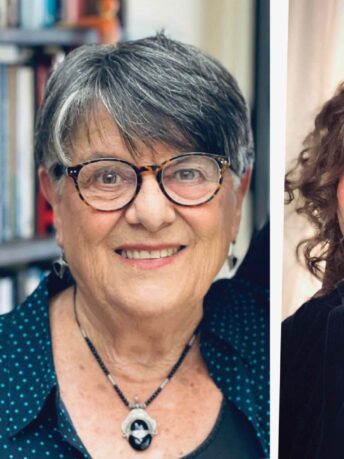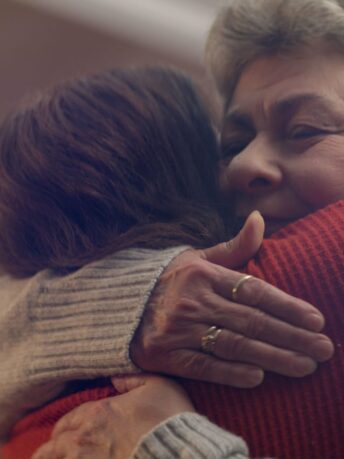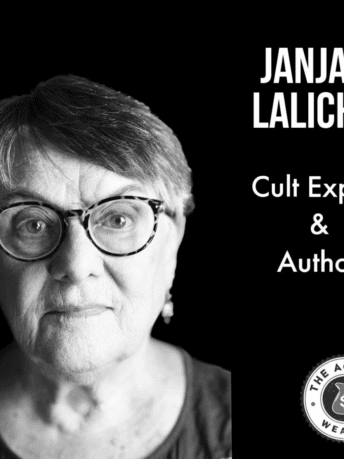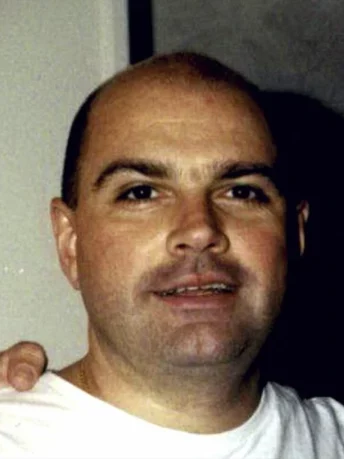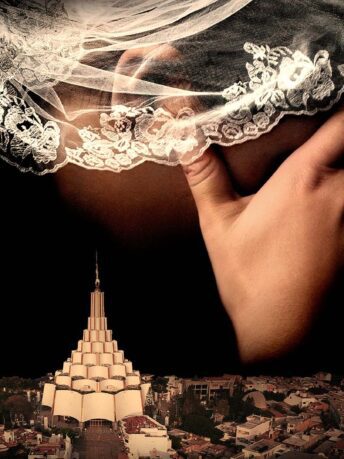Emma Cline’s “The Girls” instantly cemented her as a literary darling.
The sixties-infused fiction is both an intimate portrayal of girlhood, and a brutal examination of the murderous women in Charles Manson’s “family.” The novel focuses on Evie, a vulnerable teen, who gets ensnared in a dangerous cult with a charismatic leader.
But the truth behind Cline’s work is stranger — and certainly more chilling — than fiction. It’s unclear how many cults currently operate worldwide, but research suggests 70% of global cult members are women.
These dangerous, typically patriarchal sects function and feed on fear. Cults convince members that the center figure is divine, special, or the only person who can save them.
“Members are typically taught stopping techniques to block out any doubts in their mind,” cult survivor turned counselor Steven Hassan told Revelist. “[They’re told], ‘If you ever want to leave the group, terrible things are going to happen…your life’s going to go to hell, you’re going to be possessed by demons, you’re going to get hit by a car.”
There’s no concrete evidence that explains why women are more likely to get involved in cults. Though people of all genders suffer abuse in these groups, women are often sexually abused, and even molested as girls.
Revelist spoke to three women who survived the mental and emotional torture of cults. These are their stories:
Claire McAuliffe
McAuliffe, who now lives in Brisbane, Australia, said her family joined a “super strict Catholic sect” cult when she was a child.
“I remember my life being normal until I was four,” she told Revelist. “When I was four, mom met this priest who didn’t like the changes in the church and he believed that there were conspiracy theories surrounding the pope and the Vatican…that sort of thing.”
The priest conducted a traditional Latin mass in her family’s home. Eventually, he attracted a small following, which grew into a larger and more zealous group. The priest encouraged absolute self-sufficiency in the home, which McAuliffe’s parents happily obeyed.
“This priest believed in heavenly messages, saying the world was going to end around the year 2000,” McAuliffe said. “So we were working toward self-sufficiency and being off the grid.”
McAuliffe did not interact with outside world until she turned 18.
“I honestly was so backward — I had no self-confidence, no self-esteem,” she said. “We lived for the last judgment. Every sin that we committed would eventually be found out and then we’d have to go to hell. It was very religious and guilt-based, and it seemed like there was nothing we could do right.”
So at 18, McAuliffe left her parents to take a nannying job in Melbourne, where she met a former seminarian 13 years her senior. McAuliffe said she felt “lost,” and that their relationship wasn’t really a loving one, but they still wed.
Eventually, their marriage took a dark turn.
“Only a few years after we got married, I suddenly realized that he believed in end-of-world theories,” she said. “Because he had a European background, his parents were from Slovenia, he had this ridiculous fantasy that we should live like his parents. It was a stupid fantasy and he was trying to find something like that in Australia, and he did.”
She and her husband spent the next nine-and-a-half years in Australia’s largest doomsday cult, led by William Kamm, aka the “Little Pebble.”
Joining meant leaving their home in Melbourne and traveling 10 hours to a remote compound surrounded by barbed wire. McAuliffe adamantly opposed the idea, but her husband insisted.
“I was forced to go because I had no self-confidence, no self-esteem, and no tertiary education,” she said. “We never shared a bank account for the 17 years we were married, so I had no access to money.”
Women in the cult labored many long and painful hours.The leader required mothers to make a lavish lunch (and later, dinner) for all 180 people on the compound. McAuliffe had to balance this with her other required activities (e.g. mandatory gardening and weeding, participating in lengthy masses, etc.) while also taking care of her young children.
Worst of all, Kamm, the cult leader, preyed upon women — especially young ones.
“You know how David in the Bible had all those concubines?” McAuliffe asked. “He resurrected that and made his own Royal House of David. The thing is, he chose young and pretty women — whether they were married or not. I was on that list — I was never asked whether or not I wanted to be on that list — I was just put on it.”
“I was told I was a princess, without me actually saying ‘yes’ to it and not even knowing what it entailed.”
“It suddenly all came together — it was like, ‘Holy shit this is what he’s doing,'” McAuliffe said. “Here in Australia, the legal age for you to have sex is 16 — the legal age of consent. I wondered why some of the girls were having babies when they were 17, so I thought he was just having sex with them when they turned 16, and having babies when they were 17.”
“It was only much later I found out that he was ‘preparing’ and molesting them from a much younger age.”
McAuliffe claims the girls’ parents knew, but just didn’t care. In fact, they were honored that their daughters would be “princesses” after the world ended.
In 2002, everything changed: Authorities arrested Kamm for sexually abusing two 15-year-old girls. A judge subsequently sentenced him to 10 years in prison. To this day, he maintains god and the Virgin Mary told him to molest his victims.
McAuliffe begged her husband to leave the cult, but he refused. She couldn’t afford to move on her own, so she began to mentally “check out.”
McAuliffe needed money to move — and she didn’t have it. She didn’t even have access to the family’s dwindling finances.
“In my head, I knew the marriage was over,” she said. “I just put it out into the universe: ‘I need to move from here. I don’t know how it’s going to happen but I’m just going to look for opportunities.'”
She started looking for rentals in the real estate section of the local paper. When her husband discovered this, he began tearing the real estate section out.
“He started taking out the real estate section of the paper and throwing it in the bin,” McAuliffe said. “And then he tried to tell me that the paper wasn’t printing the real estate section anymore.”
“I was like, fuck off – that isn’t true.”
“We got evicted by the sheriff, which sounds traumatic but it wasn’t,” she said, laughing. “My kids and I were so happy, ’cause I’d been looking for an opportunity and I didn’t know how it was going to present itself. You can talk to the sheriff today and he’ll still remember me, because when he handed me the papers and said ‘You’re getting evicted,’ I said, ‘My god thank you, my kids and I wanted to move out of here for so long. Just tell me what I have to do.'”
The family moved into a rental home outside the compound. A woman from the church McAuliffe attended decided to help her and her children because she knew they’d been through a lot.
“My new life then started,” McAuliffe said.
McAuliffe divorced her husband in 2008, and has since been remarried. Her kids have all grown into successful adults.
She’s dedicated her life to anti-cult advocacy; in September, she spoke at TEDxUQ about her experiences.
William Kamm has been released from prison, but is electronically monitored 24/7. His cult continues to expand across the world.
Vennie Kocsis
Kocsis, who is the youngest of three, said Sam Fife’s “Move of God” cult recruited her mother while they lived in California. At the age of 3, her family moved to the cult’s compound in Ware, Massachusetts.
“My experience in Ware was quite torturous,” she told Revelist. “We were separated from my mother, and what happened there was very MKultra-type torture. We were tied to chairs, and there was demon possession casting out rituals.”
“It was hard core shit.”
Kocsis said “pedophiles were welcomed” into the cult, which contributed to rampant sexual molestation. She — and allegedly, her brother — were victims of such abuse.
Kocsis’ family eventually moved to a heavily armed and guarded compound in Alaska. The cult’s members led extremely tumultuous lives. They were told communists would eventually kill all Christians.
Abuse remained a serious, widespread problem and too often, children paid the price.
“We were excommunicated in 84 from Alaska, after my sister got raped,” Kocsis said.
Kocsis told Revelist an older man had been abusing her sister for a long time. “There were times when my sister would wear long sleeves on a summer day, and say, ‘Oh, I’m just cold.’ But it was because she had bruises from him grabbing her arm, things like that,” she said.
“Before we were excommunicated, she had to stand in front of the congregation and say she was a whore, a harlot of Babylon, that she seduced him.”
Her sister was 16 at the time.
“I mean, I never learned about slavery,” she said. “So here I was, in the south with my grandmother, in deep segregation, and I couldn’t wrap my mind around what racism was.”
Kocsis struggled through adolescence, searching for ways to fit in with her peers. After studying fine arts in Tennessee, Kocsis moved the the Pacific Northwest.
Then, in 2007, her mother died, which forced Kocsis to think more critically about her trauma. She wrote and published her first book, “Cult Child,” a memoir about her experience in The Move.
Today, she is an advocate for cult survivors, who she feels don’t get enough support.
“There’s ‘exit counseling,’ but at the price of what? These people have no money. They have to rely on the social services system, which they don’t know how to use. There’s no true support network for specifically cult members.”
That’s why Kocsis has chosen to offer support to cult survivors around the world. Although she still struggles with trauma-related issues, she remains steadfast in her commitment to helping others heal.
“Everybody’s journey is different, but it was important for me to train my mind to seriously believe in nothing,” she said. “That’s a long process…[but] we don’t live there anymore.”
Janja Lalich
“I was 30-years-old, I had already graduated from college with honors and lived in Europe for a while,” she told Revelist. “I had just moved to San Francisco and so I was new in town. Through a friend of a friend, I met someone who was eventually the person who recruited me to the cult.”
Lalich, a self-described feminist, got involved in a leftist study group. She didn’t realize the group served as an interface — or “front group” — to recruit members without their knowledge. After spending some time with the group, Lalich became convinced that creating a Marxist-Leninist party would affect change in the US.
That party grew into a political cult called the Democratic Workers Party, led by a charismatic but draconian leader, Marlene Dixon.
“Once I joined, of course everything changed,” Lalich said.
After being initiated into the party, Lalich quickly moved up the ranks and became part of Dixon’s “inner circle.” She worked 20 hour days, acting as a “foot soldier” for various local politicians.
“I had an extremely difficult life, she said. “No vacation, no sleep, bad food, and constant criticism. We spent most of our time criticizing each other and breaking people down.”
“That’s what life was like under the belief that we were going to bring changes for the working class of America,” Lalich said.
At a certain point, Lalich decided to leave the cult, but had no idea how. Marlene Dixon’s erratic behavior had gotten worse; verbal and physical assault had become routine, which terrified Lalich.
Still, she felt “paralyzed.”
“There were a number of times I wanted to leave, or I thought about escaping, but I absolutely couldn’t figure it out,” Lalich said. “I had lost many friends who weren’t in the cult. Both my parents had died, and I had no contact with anyone else outside the cult.”
“I was praying every day that I would die in a car accident; that was the only way I could see getting out.”
“It was very unusual, but we finally had our revolution and the group kind of imploded,” she said. “We expelled our cult leader and we dissolved the organization and everybody got out.”
As for Marlene Dixon?
“She’s dead now, thank god,” Lalich said.
In the decades since she left the DWP, Lalich has dedicated her life to educating others about cults: She founded the Center for Research on Influence and Control in addition to writing several books on the subject.
“We’re used to responding to guilt and shame and love and fear, and these things that are normal in our everyday life,” Lalich told Revelist. “[Cults] use basic manipulative techniques, and so we respond because it’s ‘normal.'”
“The more bizarre it is, the longer it goes on, the more that bizarre behavior becomes normal.”
Story first published on Revelist.


